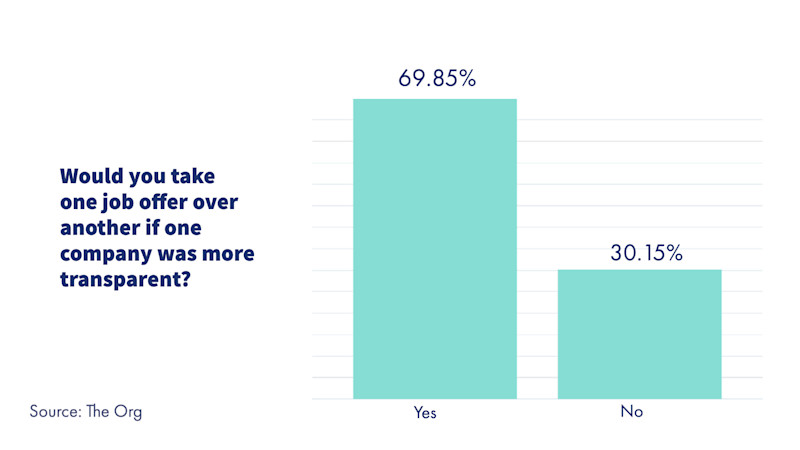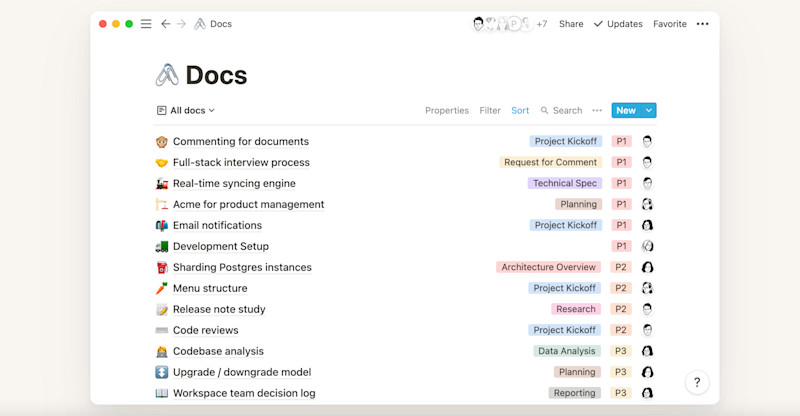Employer Branding Trends for Startups in the Age of Transparency
Table of contents
Here are 5 ways startups can turn transparency into a competitive edge — and a magnetic employer brand.

If 2022 is considered the Year of Pay Transparency, then what lies ahead can only be more cultural appetite for companies with open book operations. Looking beyond just this year, it’s safe to say we’re entering the Age of Transparency, where pay is just one way a company publicly voices its values and priorities — and proves, for better or worse, whether it walks the talk promised in its employer branding.
Now more than ever actions speak louder than words, so this is the time to go beyond the minimum requirements for transparency and consider the ways your startup does or does not live up to its word on its values, operations, and culture.
Because whether it does or not defines your employer brand.
Transparency: a competitive advantage for startups
With so much emphasis on transparency, more companies are trying in earnest to undo their reliance on steep hierarchies, reactive information sharing, and siloed operations — but few have hit the mark on meaningful organizational transparency according to Slack’s Future of Work survey, which found that 82% of knowledge workers value transparency in the workplace, while only 19% actually consider their company to be “very transparent”.
There’s no doubt that organizational transparency is a noble cause in theory. But in practice at more established companies, transparency is often conflated with visibility with leaders paving a one-way street view of employees’ activities, instead of holding all employees and leaders to the same standards.
The reality is that all companies would benefit from being more genuinely transparent when sharing a job posting — but some will have an easier time of it than others, like the ones who don’t have a legacy of opaque business operations to contend with.
And about those benefits —
The tangible benefits of a transparent employer brand
Transparency boosts employee engagement and productivity. A culture built on trust leads to a collaborative environment where employees feel invested in the success of the company, and more inclined to innovate. When employees trust their employer, increased engagement and productivity tend to follow.
It reduces turnover and creates a stable culture. According to Future Forum’s Pulse survey, transparency is the secret to retention. In companies where leaders are not regarded as transparent, twice as many employees are likely or actively planning to leave. And on top of the very real cost of turnover, companies with a revolving door culture also pay the price with their employer brand.
It attracts and converts top talent. Findings from our 2021 post-pandemic transparency survey confirm that job seekers value transparency across the candidate experience, with nearly 70% of respondents saying that if there were two job offers on the table, they’d accept the offer from whichever company was more transparent.

It strengthens relationships with current and future investors. This one almost goes without saying — but no investor wants to enter a deal without all the facts. Being open and honest about the reality of your business, and having meaningful organizational transparency measures in place, will build their trust in your business.
That sums up why startups need to value transparency — but what about the how?
5 Employer brand trends for startups focused on transparency
As more companies open their eyes to the value of transparency, a few key trends are emerging across leading tech companies —
1. An open book candidate experience from end-to-end.
Transparency shouldn’t start the day a job candidate signs on the dotted line — it should be a red thread from the first click on a job listing all the way through to onboarding. For many companies, the road to a transparent candidate experience begins with publishing an accessible org chart.
With 65% of millennials valuing culture over cash, a public org chart is the kind of indicator that makes your company culture stand out from the crowd. An accessible org chart is an empirical proof point for a transparent company culture in the eyes of job seekers because it puts the answers to the important questions on a silver platter — like how departments and teams are structured, and who exactly they’d be reporting to and collaborating with everyday.
Candidates want to see exactly how and where they’ll fit into an organization, and companies that paint the clearest picture have an edge in the talent market.
2. Fluff-free core values.
Core values are a critical part of employer branding — and yet, so many orgs fall into the trap of choosing the boilerplate must-haves of any functioning work environment, like integrity, respect, and so on.
Core values with substance to them will do much more for your employer brand than ones that feel like an afterthought. Rather than listing a series of adjectives unpacked in lofty marketing copy, bring your core values down to earth by clarifying exactly how they manifest in your organization.
One way to do this is by adding actionable context to your values by grouping them into buckets like How We Communicate, How We Prioritize, and How We Grow. Without articulating exactly how employees are expected to live by your core values in the day-to-day, this important part of your employer brand becomes not only less transparent, but also indistinguishable from other companies in your space.
3. A gold standard for knowledge management.
Effective knowledge management is mission critical for any startup to run smoothly, but if tools for it are implemented without the right systems in place it can have the opposite effect.
There’s nothing smooth (let alone transparent) about messy onboarding and training for new employees, unstandardized and undocumented processes, or information you’ve come across once never to be seen again.
Because employees at startups tend to wear many hats and frequently step outside their usual role or function, there’s even more to gain from effective knowledge management — whether it’s aligning all collaboration on shared company values, establishing outcome-based expectations, or creating a positive reinforcement loop for transparency across the organization by showing that everyone operates on the same rules and expectations.

4. Give employees a voice, and listen closely to what they say.
In the Age of Transparency, employees are less inclined to invest time and energy sharing questions, concerns, and feedback with leadership unless there’s a clear indication that their contributions will be taken seriously.
Most companies already host a regular open forum or town hall meeting where employees can air what’s on their mind, ask the hard-hitting questions, and raise issues if necessary. But the most transparent companies are the ones who continue the conversation beyond the meeting, take action on what arises, and follow up about progress.
The best way to go about this is unique to each company, but it can look like a dedicated agenda point at each town hall meeting to share progress and updates on previous topics raised — or a regular cadence for deploying and responding to employee satisfaction surveys.
Listening to employees and actively following up on those learnings is what separates a genuine culture of transparency from a culture of lip service.
5. Show your numbers beyond the board room.
While data may not be all that exciting to some, it’s extremely important for job seekers, employees, and investors to know the numbers — everything including a company’s revenue, churn, growth projections and any other key results for company objectives.
While some companies have internal OKR websites that pull in real-time data, others release formal reports each quarter — and some are turning their organizational transparency into external-facing content to build their employer brand alongside their business brand.
To be clear, there’s no need to publish sensitive financial data on your company’s blog — but you’d be surprised how compelling a “year in numbers” story can be to general audiences interested in how different types of businesses operate behind the scenes.
Make transparency a meaningful part of your employer brand
Good intentions aside, transparency won’t take you far without trust, and trust isn’t earned with a single corporate initiative. A real culture of trust is something you build over time — and show (not tell) with your employer brand once you’ve earned it. It’s a long game that often pays off short term in employee engagement.
After that, dividends.
The Org: A step towards transparency
The Org is where the world’s top startups talk honestly to active job candidates.
With The Org, job seekers don’t have to settle for bland job descriptions full of boring bullet points — instead, they can see with their own eyes what it will really be like to join your team.
The Org is the only place where you can show off your culture, diversity, values and core principles in a way that’s designed to turn top candidates into your newest colleagues.
Sign up for The Org for free today, and join a community of over 300,000 companies contributing to a more transparent hiring process.
In this article


The ORG helps
you hire great
candidates
Free to use – try today
